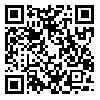Sat, Nov 30, 2024
[Archive]
Volume 18, Issue 3 (September 2021)
IJMSE 2021, 18(3): 1-8 |
Back to browse issues page
Download citation:
BibTeX | RIS | EndNote | Medlars | ProCite | Reference Manager | RefWorks
Send citation to:



BibTeX | RIS | EndNote | Medlars | ProCite | Reference Manager | RefWorks
Send citation to:
Heidar Alaghband A, Moosavi A, Baghshahi S, Khorsandzak A. Structural and Luminescence Properties of SnO2 Nanostructures Via Porcine Gelatin-Assisted Synthesis. IJMSE 2021; 18 (3) :1-8
URL: http://ijmse.iust.ac.ir/article-1-2287-en.html
URL: http://ijmse.iust.ac.ir/article-1-2287-en.html
Structural and Luminescence Properties of SnO2 Nanostructures Via Porcine Gelatin-Assisted Synthesis
Abstract: (11883 Views)
Porous nanostructured SnO2 with a sheet-like morphology was synthesized through a simple green substrate-free gelatin-assisted calcination process using Tin tetracholoride pentahydrate as the SnO2 precursor and porcine gelatin as the template. Crystalline phase, morphology, microstructure, and optical characteristics of the as-prepared material were also investigated at different calcination temperatures using X-ray diffraction (XRD), Field emission scanning electron microscopy (FESEM), UV-visible absorption, and Photoluminescence spectroscopy (PL), respectively. XRD patterns of all the samples revealed the presence of a tetragonal crystalline structure with no other crystalline phases. Moreover, the synthesized hierarchical sheets assembled with nanoparticles displayed a large surface area and porous nanostructure. The calculated optical band gap energy varied from 2.62 to 2.87 eV depending on the calcination temperature. Finally, photoluminescence spectra indicated that the nanostructured SnO2 could exhibit an intensive UV-violet luminescence emission at 396 nm, with shoulders at 374, violet emission peaks at 405 and 414 nm, blue-green emission peak at 486 nm, green emission peak at 534 nm and orange emission peak at 628 nm.
Keywords: SnO2, Porcine gelatin, Sheet-like morphology, Optical properties, Photoluminescence., Gel drying
Type of Study: Research Paper |
Subject:
Ceramics
Send email to the article author
| Rights and permissions | |
 |
This work is licensed under a Creative Commons Attribution-NonCommercial 4.0 International License. |






